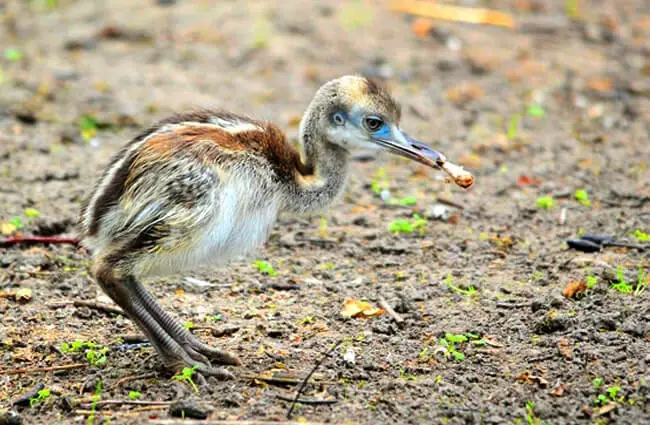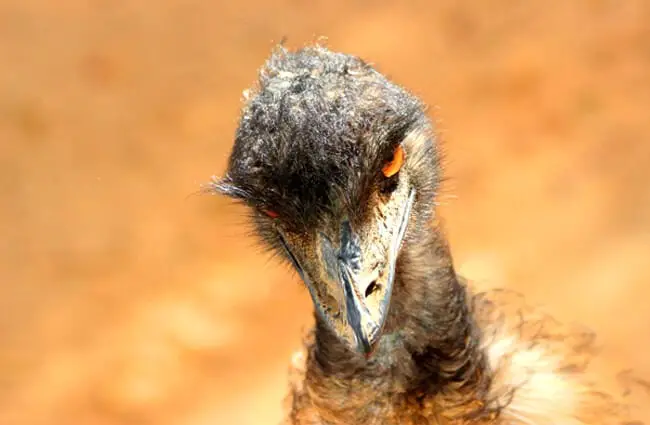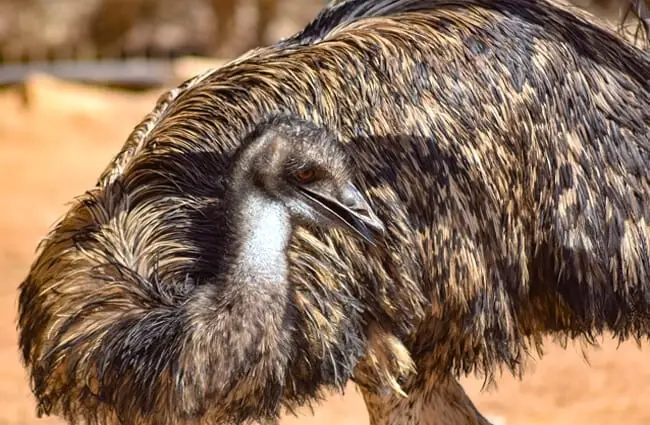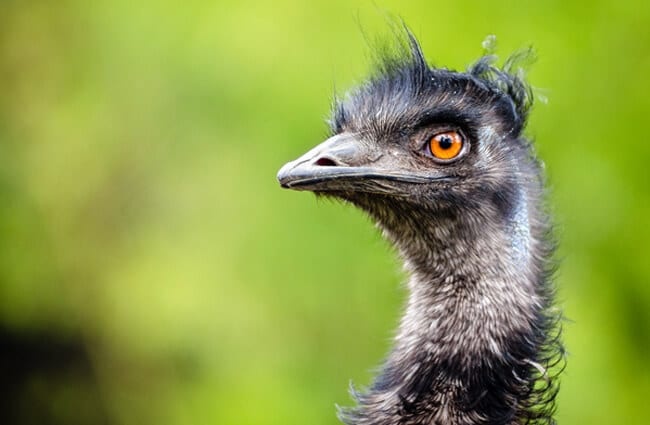The Australian outback is home to a remarkable bird, an iconic symbol of the continent: the emu. More than just a large, flightless bird, the emu Dromaius novaehollandiae is a keystone species, a cultural icon, and a fascinating subject for scientific study. This comprehensive guide explores all facets of emu life, from its evolutionary history and ecological role to its interactions with humans and unique behavioral traits.
What is an Emu? A General Overview
The emu is the largest native bird in Australia and the second largest living bird by height, after the ostrich. Characterized by its long legs and neck, shaggy brown plumage, and powerful strides, the emu is perfectly adapted to traverse the vast Australian landscapes. Adults typically stand between 5 and 6 feet tall and weigh between 66 and 121 pounds. Their size and speed make them a commanding presence in their environment.

Habitat and Distribution
Emus have a wide distribution across Australia, inhabiting a variety of habitats including grasslands, woodlands, and shrublands. They are most commonly found in areas that offer access to water and suitable vegetation for foraging. Historically, their range extended into drier areas, but land clearing and agricultural practices have fragmented their habitat in some regions. Emus generally avoid dense forests and rainforests. They are nomadic, moving across the landscape in search of food and water.
Evolutionary History
The emu’s evolutionary lineage can be traced back millions of years. Fossil evidence suggests that emus, along with cassowaries, kiwis, and ostriches, share a common ancestor—a flighted bird that existed during the Cretaceous period. Over time, these birds diversified and adapted to different ecological niches, eventually losing their ability to fly. The emu’s closest living relative is the cassowary, found in New Guinea and northeastern Australia. Paleontological studies have revealed several extinct emu species, indicating that the current species has undergone significant changes throughout its evolutionary history.
Diet and Foraging Behavior
Emus are omnivorous, and their diet varies seasonally and with food availability. They primarily feed on grasses, seeds, fruits, and insects, supplementing with small invertebrates and occasionally small reptiles. They are opportunistic feeders and will also consume crops if given the opportunity. Emus play a crucial role in seed dispersal, aiding in the regeneration of native vegetation. They have a unique digestive system that utilizes grit and stones to grind up their food. They are known to follow migratory locust swarms, feasting on the insects.

Mating and Reproduction
Emus are generally solitary birds, except during the breeding season. Breeding typically occurs from September to March. The male takes the primary responsibility for incubating the eggs. During courtship, the male emits booming calls and performs a dance-like display. The female lays a clutch of five to fifteen dark green eggs. The male incubates the eggs for about 45 to 50 days, rarely eating or drinking during this period and relying on stored fat reserves. The chicks are precocial, meaning they are relatively independent and can walk and forage shortly after hatching. The male continues to care for the chicks for several months, teaching them foraging techniques and protecting them from predators.
Emus and the Ecosystem
As a large herbivore and seed disperser, the emu plays a critical role in maintaining the health and biodiversity of Australian ecosystems. Their grazing helps control vegetation growth and prevents the dominance of certain plant species. They also disturb the soil, promoting seed germination and increasing plant diversity. Their droppings provide essential nutrients for plant growth. Emus are prey for dingoes and eagles, contributing to the food web. They interact with other herbivores, such as kangaroos, by sharing foraging resources.
Emus and Humans
For thousands of years, emus have been an important part of Aboriginal Australian culture. They feature prominently in Dreamtime stories, art, and traditional hunting practices. Emus provided a valuable source of food, feathers, and oil. Early European settlers also hunted emus for their meat and feathers, but populations declined due to habitat loss and overhunting. Today, emus are protected in many areas, and their populations are recovering. They are also farmed for their meat, oil, and leather. Emu farming is a sustainable agricultural practice that provides economic benefits while minimizing environmental impact.

Encountering Emus in the Wild
If you are fortunate enough to encounter an emu in the wild, it is important to maintain a safe distance. Emus are generally not aggressive, but they can become defensive if they feel threatened. Avoid approaching them closely or attempting to feed them. If an emu approaches you, slowly back away and make yourself appear larger. If you are hiking in emu habitat, be aware of your surroundings and watch for signs of their presence, such as footprints and droppings. Never attempt to corner or chase an emu.
Caring for Emus in Captivity
For zookeepers and animal care professionals, providing appropriate care for emus requires a thorough understanding of their natural history and behavioral needs. Emus need spacious enclosures with access to both open grassland and sheltered areas. Their diet should include a balanced mix of grasses, grains, fruits, and vegetables. Regular health checks and preventative care are essential. Emus can be prone to leg injuries and parasitic infections. Enrichment activities, such as opportunities for foraging and social interaction, are important for their well‑being. Avoid overcrowding and provide ample space for them to roam and exercise.
Fun Facts about Emus
- Emus can run at speeds of up to 31 miles per hour.
- They are excellent swimmers and can cross rivers and lakes.
- Emus have three eyelids, providing protection from dust and sunlight.
- Their feathers have a unique double‑plume structure, providing insulation and waterproofing.
- Emus can live for 15 to 20 years in the wild.
- Male emus are responsible for incubating the eggs and raising the chicks.
- Emus are nomadic birds, constantly moving in search of food and water.
- They play a vital role in seed dispersal and maintaining ecosystem health.

Conservation Status and Threats
While emus are not currently considered endangered, their populations face several threats, including habitat loss, fragmentation, and predation by introduced species such as foxes and cats. Climate change and increased agricultural intensification also pose challenges to their survival. Conservation efforts include habitat restoration, predator control, and public awareness campaigns. Protecting emu populations is crucial for maintaining the biodiversity of Australian ecosystems.

The emu stands as a testament to the unique and resilient wildlife of Australia. From its evolutionary history to its ecological role and cultural significance, this remarkable bird continues to captivate and inspire. By understanding and appreciating the emu, we can ensure its survival for generations to come.


![Red Angus Closeup of a beautiful Red Angus cowPhoto by: U.S. Department of Agriculture [pubic domain]https://creativecommons.org/licenses/by/2.0/](https://animals.net/wp-content/uploads/2020/03/Red-Angus-4-238x178.jpg)




![Red Angus Closeup of a beautiful Red Angus cowPhoto by: U.S. Department of Agriculture [pubic domain]https://creativecommons.org/licenses/by/2.0/](https://animals.net/wp-content/uploads/2020/03/Red-Angus-4-100x75.jpg)

